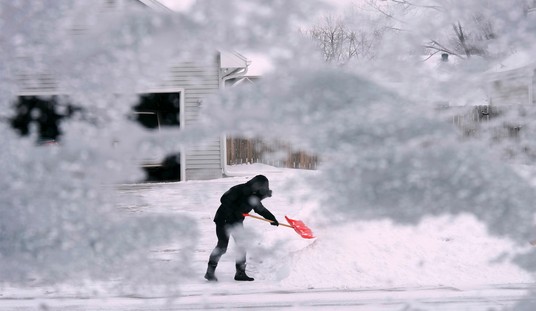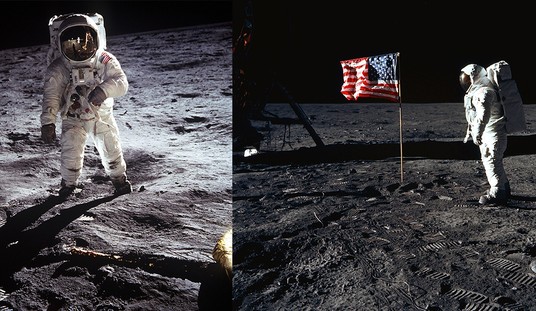Hot Town, Summer in the City
It's summer, and it's getting warm out (he wrote, belaboring the obvious). Here in the Great Land, we're in for some unseasonably warm weather in the next few days; afternoon highs will be in the 70s if you can imagine that. That's downright uncomfortable!
Of course, down in the lower 48, things are quite a bit warmer. Much of the country is seeing a serious heat wave, and high temperatures can be dangerous for people not prepared for them. These days, those of us in the developed world are fortunate, as we have ways to deal with the heat, not least of which is air conditioning, which along with some iced tea and ice cream will get most of us through these days.
There have been plenty of times in the planet's history, though, when it was much warmer.
It's Hot.
It's going to get particularly warm in the next week or so, especially in the Midwest and parts of the Northeast. If you're in one of these areas, you'll want to prepare. Hot weather can be dangerous, especially for the very young and very old:
Heat-related illness can be deadly if not recognized and treated early, and often starts with muscle cramps or spasms, experts say. Heat exhaustion and heat stroke could follow.
Young children and infants, pregnant women, the elderly and people with chronic medical conditions are especially vulnerable, as are those who can’t get around well or who live alone.
But a little perspective is in order. To that end, let's hop in our virtual Wayback Machine and take a trip into the past.
The Paleocene-Eocene Thermal Maximum
I've written about this period in history before, but it's worth taking a look at what North America may have been like at this time, roughly 55 million years ago. The PETM lasted about 100,000 years, and yes, it was hot - thus the term "thermal maximum." This hot spell was not caused by titanotheres driving around in gas-swilling SUVs, but instead is thought to have been caused by volcanic eruptions and the resulting release of methane hydrates from the sea floor.
The result? Temperatures globally were high; ocean temperatures in the Arctic were comparable to today's subtropical and temperate oceans, while Europe had tropical rainforests as far north as Germany. Here in North America, the climate was warm, with forested areas and savannah, and you might see the aforementioned titanotheres wandering around eating the abundant browse. Continental air temperatures were about nine degrees warmer than today, and it's worth noting there were no coal-fired power plants: Just a vast, flourishing ecosystem.
See Related: Thousands of Beloved Joshua Trees to Be Chopped Down in Maniacal CA Solar Energy Push
If we go back farther, we can see a time when the Earth was warmer still: The Jurassic.
The Real Jurassic Park
Several things made the late Jurassic a warm, muggy place. First, seafloor spreading in the young Atlantic released a lot of volcanic gases; second, the globe-spanning Tethys Sea produced a warm-water current that circled the planet, having a warming effect on the globe. The result? The late Jurassic world was an ideal place for dinosaurs; warm and moist, with tropical forests again as far north and south as 60 degrees latitude. There was no ice at the poles; Jurassic Antarctica was covered in a temperate rainforest and inhabited by dinosaurs adapted accordingly.
North America at that time was, of course, the source of the famous dino-rich Morrison formation. Were one to be able to walk around Jurassic America, it would be warm, with summers hotter than today, but nevertheless another vast, flourishing ecosystem, with dinosaurs, early mammals, and a wide variety of flora.
None of those dinosaurs were running air conditioners or driving big diesel pickups.
Now, I'll grant you, the farther we go back in time, the more difficult it is to measure temperatures, but we can draw certain conclusions from broad indicators, like fossils of tropical plants from Eocene Germany, or the remnants of temperate forests from Jurassic Antarctica. But there is one year for which we do have good records, and it was a record-breaker. It was recent enough that my father used to tell tales about that infamous summer, when he was 12 years old - the summer of 1936.
The Great Heat Wave of 1936
This summer, in the midst of the Great Depression, remains the hottest since the United States started keeping records:
The climatological summer (June-August) of 1936 was the warmest nationwide on record (since 1895) with an average temperature of 74.6° (2nd warmest summer was that of 2006 with an average of 74.4°) and July of 1936 was the single warmest month ever measured with an average of 77.4° (beating out July 2006 by .1°). Ironically, February of 1936 was the coldest such on record with an average nationwide temperature of 26.0° (single coldest month on record was January 1977 with a 23.6° average). In February of 1936 temperatures fell as low as -60° in North Dakota, an all-time state record and Turtle Lake, North Dakota averaged -19.4° for the entire month, the coldest average monthly temperature ever recorded in the United States outside of Alaska. One town in North Dakota, Langdon, went for 41 consecutive days below zero (from January 11 to February 20), the longest stretch of below zero (including maximum temperatures) ever endured at any site in the lower 48.
That's hot. In 1936, air conditioning was unknown. Dad used to talk about that summer, how he and his brother would get up early in the morning and walk to the nearby Cedar River to soak in the muddy but cool water. The summer was especially hard on the elderly, and on those who (like most of my family) made their livings working outdoors. The heat wave was, ironically, followed by an exceptionally cold winter.
The heat wave of 1936 was not caused by fossil fuels, which was a tiny fraction of today's use.
Don't Panic
So much of the United States is in for unseasonably warm temperatures - even here in the Great Land, where today, even in the early morning, I was able to leave my usual flannel shirt hanging in the closet. This is not a reason for panic. It's warm, but throughout the earth's 4.6 billion-year history it's been warmer, and it's been colder. Life got through those times, and in that time there has never been a species as adaptable, as resourceful, as technologically capable, and as creative as we are.
Our energy issues will be resolved; we solve today's problems with tomorrow's technology. And if we have a warm spell ahead, we can deal with that, too - without destroying our modern technological lifestyle or abandoning proven energy sources for unreliable and low-energy-density "green" substitutes. So relax, have a cold drink, and sit in front of a fan. Winter will be back soon enough.
This seems appropriate.














